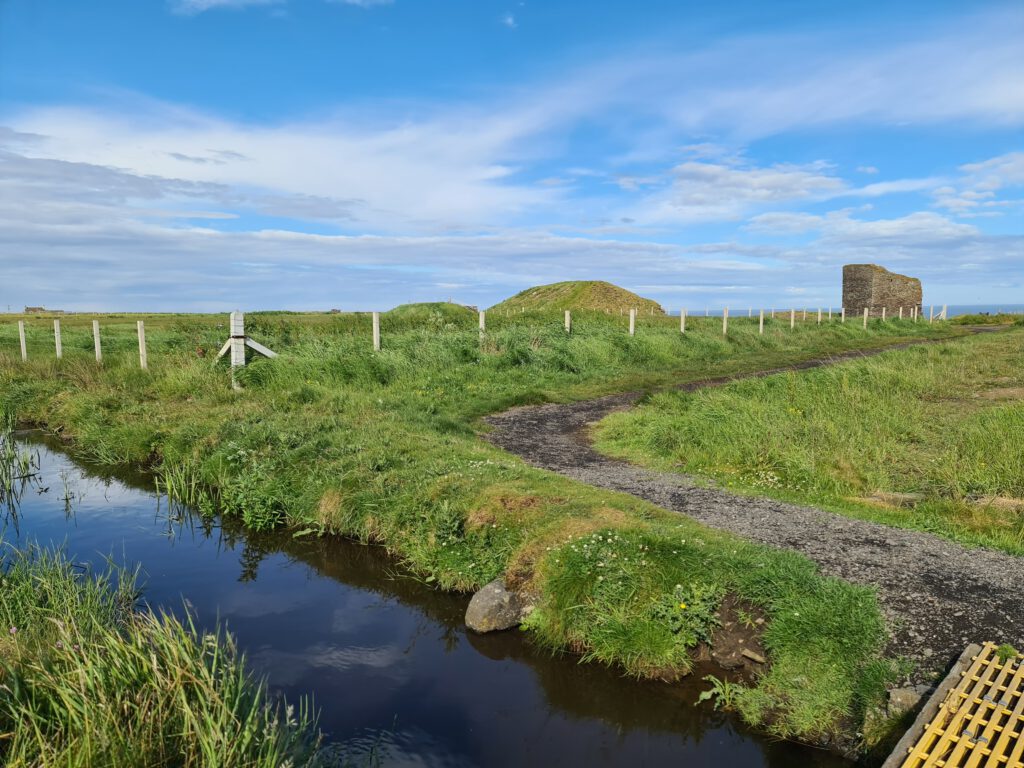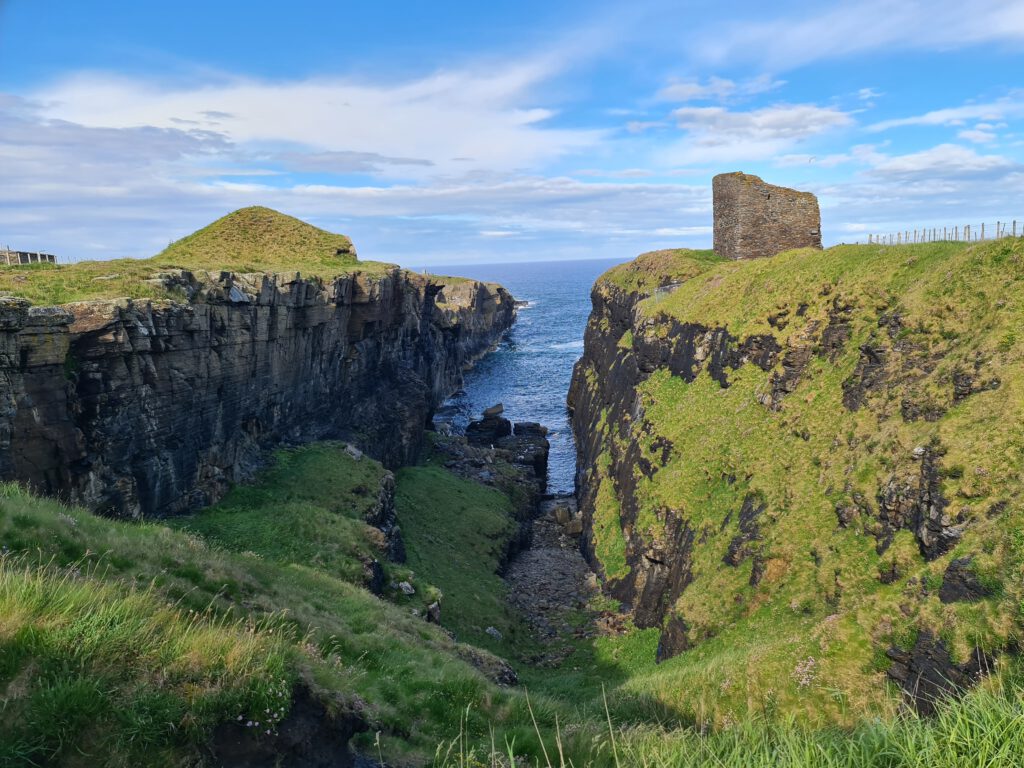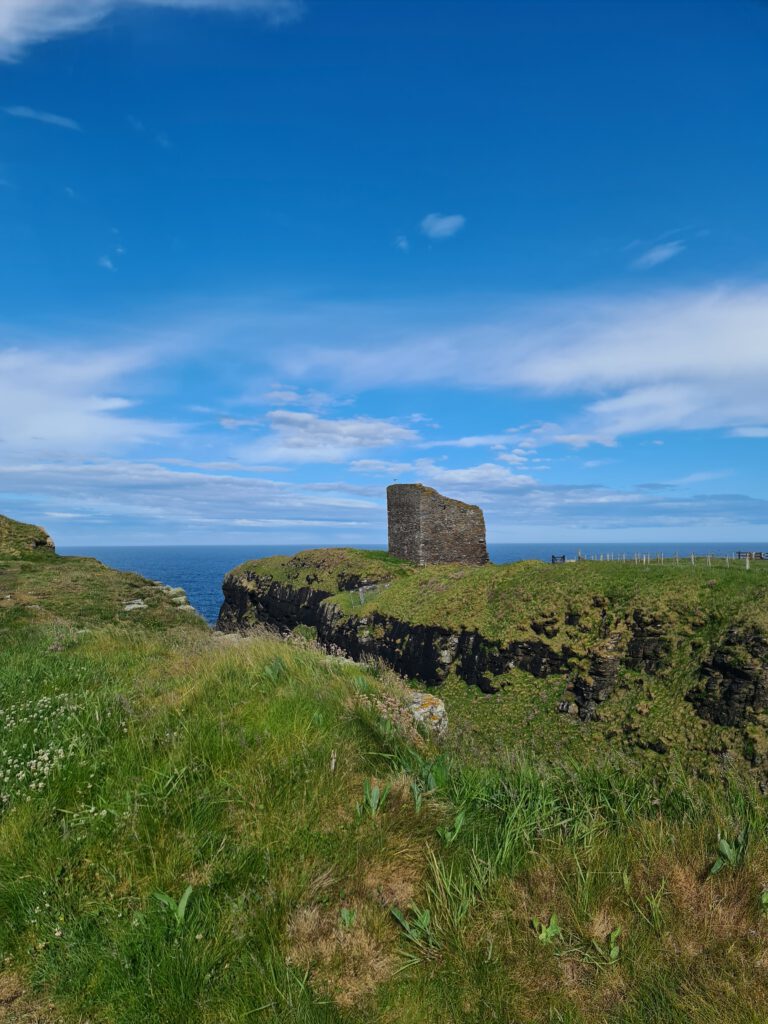Location: near Wick, Caithness, Highlands of Scotland
kind of castle: tower house
today: open to the public (currently visible from the surrounding cliffs but not to be entered due to masonry work)
public transport: buses and trains from Inverness to Wick
scheduled monument: no
managed by: Historic Environment Scotland
entrance fee: £ 0
opening times: 24/7 (currently only views from the outside)
directions: Google Maps

Located on the top of the cliffs near Wick, the Castle of Old Wick is similar to further strongholds up the coast, such as Castle Sinclair Girnigoe and Keiss Castle. It has a nickname and locally is often referred to under it, The Old Man of Wick. Today there is not much of the old fortress left, however it must have one day been an impressive building and is thought to be reaching back to the 1100s, being built by Earl Harald Maddadson, Jarl of Caithness and Orkney, although the remains of the building we can still see today only date back to the 14th century or even later.

From a historic point of view the castle is obscure and enigmatic like few others. As one of Scotland’s oldest castles it has had a turbulent history and yet not much is known or completely contradictory in all the sources. What is known that about the early 14th century the grounds and castle structure from the 1100s were in the hands of Reginald le Chen of Inverugie and Duffus. It most likely was him who started to work on what we can see today.

Through his daughter’s marriage to Nicholas Sutherland in 1345 the building passed into the hands of the Sutherlands. With another, later marriage, some generations later, the castle changed hands again, this time to William Oliphant, almost a century later.

In 1526, with Andrew Oliphant of Berrideale, the property changed hands again, although it stayed in the same family, Andrew sold it to his uncle who was the Lord Oliphant of the time. It was while Laurence Oliphant, Lord Oliphant held the castle, that it was besieged for eight days by John Sinclair, Earl of Caithness in July 1569. The siege ended after eight days with Lord Oliphant surrendering due to a shortage of fresh water.

Nearly 40 years later, the castle was sold by the Oliphant family to George Sinclair, 5th Earl of Caithness. This was the start of the castles decay, with the main residence of Sinclair, Girnigoe Castle being located not far from Castle of Old Wick there was not much use for it anymore and in the later 1700s it became ruinous.

Before the decay though, the property changed hands again, with Sinclair dying without an heir. John Campbell, Lord Glenorchy, became the new owner just to sell again in 1690, this time to the Dunbars of Hempriggs. The Dunbars were the owners of the castle until 1910.

The former four-storey tower was surrounded by a bigger castle complex with the seaward side collapsing long ago. Today the state of ruin is quite advanced with only some small things surviving, such as the narrow window slits, evidence of higher floors in form of ledges for supporting timer beams, as well as a fireplace on the second floor.

Further buildings had been built behind the tower, unfortunately those were never archaeologically excavated and so things we could have known from them might be lost now. It is save to say though that the castle lay at a superb position, high up the sea cliffs, on a peninsula, surrounded by cliffs and the northern sea on three sides.

Only a small approach in form of a draw bridge connected it to the mainland, and it was easily defended. Once there must have been barracks, a brewery, a chapel and much more as well as a defensive wall.
Although only visible from the outside and with not much left, the castle of Old Wick was definitely more than just worth the visit and since I did it in a round route walk it was a very lovely time, I spend high up on the cliffs, trying to catch a glimpse inside the ruin from the walk further on. It is definitely a piece of history worth visiting.


